SLAS464C December 2006 – January 2018 DAC8560
PRODUCTION DATA.
- 1 Features
- 2 Applications
- 3 Description
- 4 Revision History
- 5 Pin Configuration and Functions
-
6 Specifications
- 6.1 Absolute Maximum Ratings
- 6.2 ESD Ratings
- 6.3 Recommended Operating Conditions
- 6.4 Thermal Information
- 6.5 Electrical Characteristics
- 6.6 Timing Requirements
- 6.7 Typical Characteristics: Internal Reference
- 6.8 Typical Characteristics: DAC at VDD = 5 V
- 6.9 Typical Characteristics: DAC at VDD = 3.6 V
- 6.10 Typical Characteristics: DAC at VDD = 2.7 V
-
7 Detailed Description
- 7.1 Overview
- 7.2 Functional Block Diagram
- 7.3 Feature Description
- 7.4 Device Functional Modes
- 7.5 Programming
- 7.6 Register Maps
- 8 Application and Implementation
- 9 Power Supply Recommendations
- 10Layout
- 11Device and Documentation Support
- 12Mechanical, Packaging, and Orderable Information
Package Options
Mechanical Data (Package|Pins)
- DGK|8
Thermal pad, mechanical data (Package|Pins)
- DGK|8
Orderable Information
6.10 Typical Characteristics: DAC at VDD = 2.7 V
At TA = 25°C, internal reference used, and DAC output not loaded, unless otherwise noted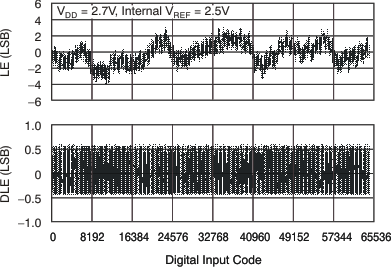
| –40°C |
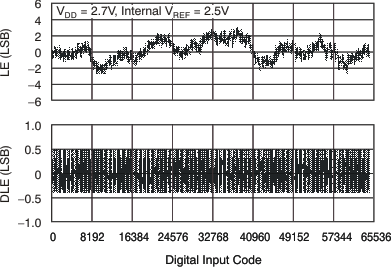
| 25°C |
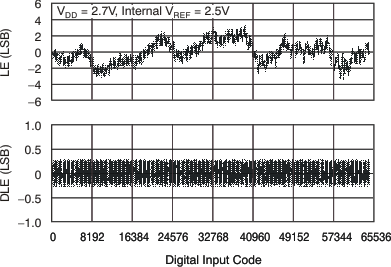
| 105°C |
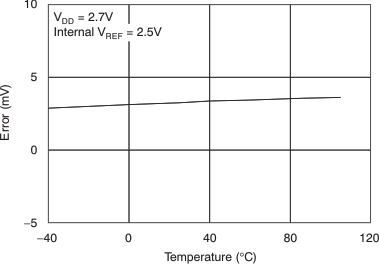
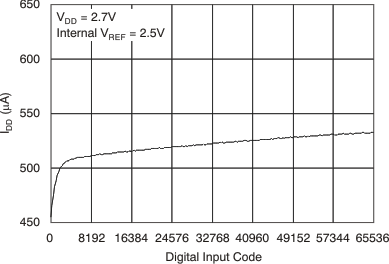
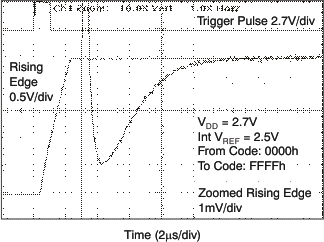
| 2.7-V Rising Edge |
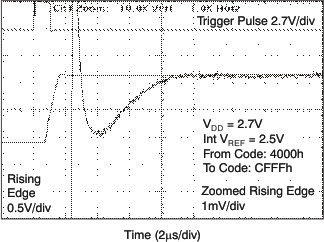
| 2.7-V Rising Edge |
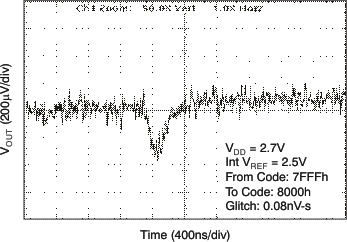
| Rising Edge | 2.7 V | 1-LSB Step |
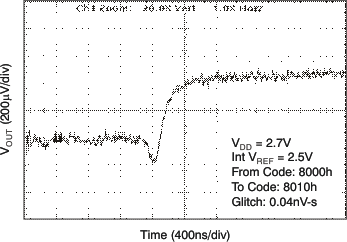
| Rising Edge | 2.7 V | 16-LSB Step |
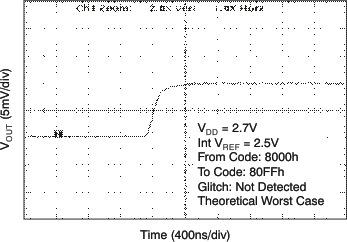
| Rising Edge | 2.7 V | 256-LSB Step |
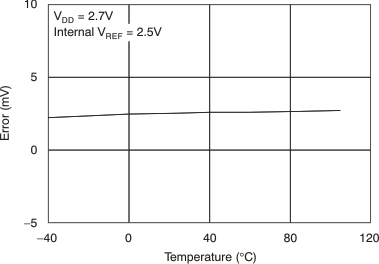
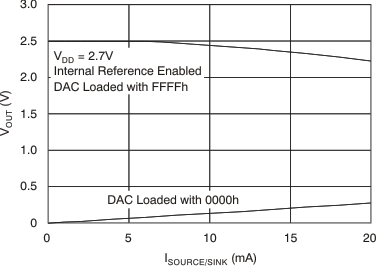
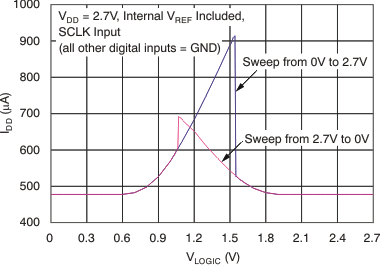
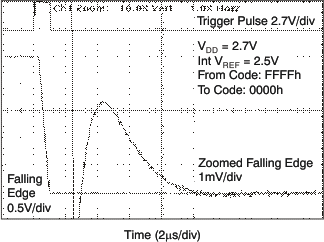
| 2.7-V Falling Edge |
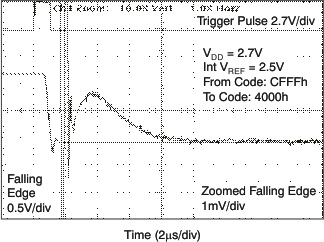
| 2.7-V Falling Edge |
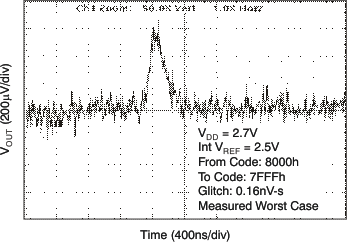
| Falling Edge | 2.7 V | 1-LSB Step |
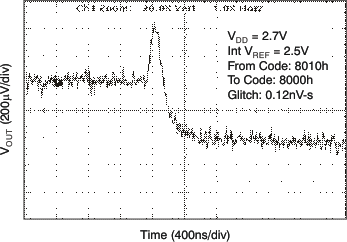
| Falling Edge | 2.7 V | 16-LSB Step |
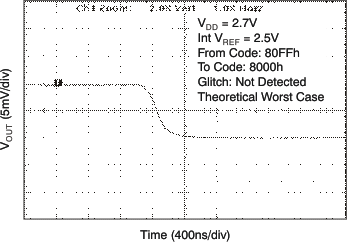
| Falling Edge | 2.7 V | 256-LSB Step |